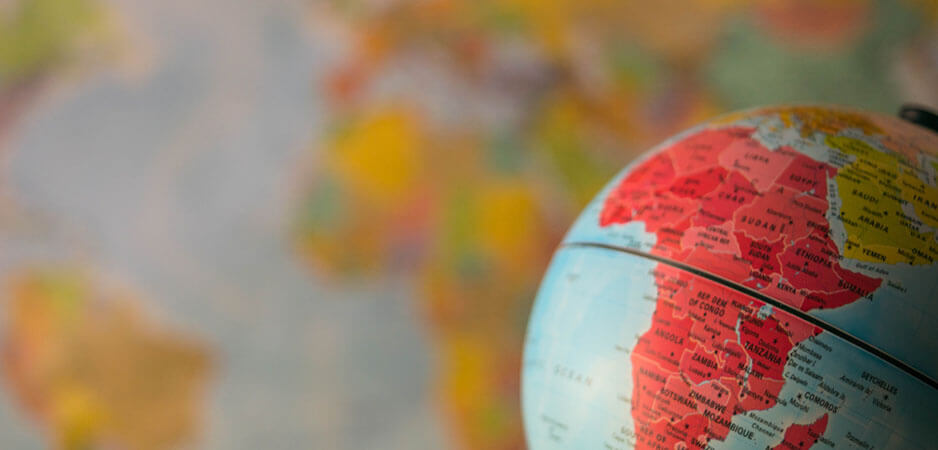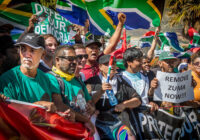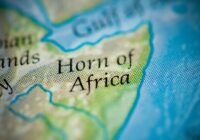With urbanization projects throughout Africa, the development of infrastructure is often incompatible with the needs of the people.
The marginalization that Black Panther — the film adaptation of the Marvel comic — decries of black inner cities in the US is about to be recreated in Africa. Phantasmagorical visions of smart eco cities of the east with Nairobi, Kigali and Dar es Salaam; Accra and Lagos in the west; the central city of Kinshasa; and the southern city of Luanda belie the likely successful attempts to advance a postcolonial future of the continent. Luxurious visions of progress push informal economies and their inhabitants from the land they have dwelled on and earned a livelihood from for years.
The most difficult part of this predicament is that state and city governments are not the harbingers of the master plan. The blueprint-makers are international architectural, engineering and property development companies, using Africa as the last frontier for development with government buy-in. The new city plans, satellite cities and large urban projects are recent developments of the last five or six years, with roots in the downturn of demand for development in the global North after the 2008 financial crisis.
While the Middle East and other parts of Asia are also targets of similar initiatives, Africa is portrayed as the “rising” continent. Private projects are nothing new in Africa, but those on a large, city-scale are new, especially the futuristic ones. Michael Goldman, professor of global studies and development at the University of Minnesota, calls this speculative urbanism: “[T]hese development interests bring with them a host of additional demands — for new and particular forms of urban infrastructure and for forms of governance and decision-making that facilitate the realization of property investment interests.”
Indeed, Africa is of rising interest in the eyes of global actors. The continent is “economically the second fastest-growing region in the world” and, by 2035, its workforce will be larger than India or China, writes Vanessa Watson of the African Centre for Cities at the University of Cape Town. So, it is clear there will be steady demand for urban projects and infrastructure.
The postcolonial context in which demand is occurring means the development of infrastructure is incompatible with the needs of African people. In sub-Saharan Africa especially, it is mostly the extremely poor and those living in informal settlements that are affected, whose futures will be destroyed by the projects that claim to bring about a sustainable future.
When pop culture provides a better antidote to development
The publication of preliminary analysis of these projects happens to coincide with a rise in pop culture seeking to provide an antidote to colonial history and the subjugation of the African diaspora. While the real-life urban plans are set to advance the interests of foreign speculators and the rich who live there, Black Panther presents a fictional antidote. The movie brings to life a self-sufficient nation, Wakanda, which has always been protected from colonialism and is now turning its gaze outward to bring wealth and innovation to the ailing diaspora.
In the film, Wakanda has used IT to isolate itself in the past. The nation’s technological prowess is born of reserves of the fictional metal vibranium, mined free from colonization and conflict, and bolstered by tradition. Tribes within Wakanda are united and loyal to the benevolent king.
The Wakandan Kingdom’s apparent unwillingness to put a stopper to the destruction of the whole of Africa, however, means that characters like Eric Killmonger — the son of an estranged Wakandan prince — must take up a villain’s role. Killmonger is bent on holding Wakanda true to its obligation to free the diaspora. We empathize with him as an incarnation of inner-city black America — the Black Panther Party set out to free the people.
The movie pits two “black panthers” — King T’Challa of Wakanda, clad in warrior panther costume, and Killmonger — against one another in a heady discourse about the nature of power and its ethical use for liberation. It feels like a largely a private conversation within black culture, with the US on the periphery and the world’s moviegoers looking on, it goes without saying, in speculation. The conversation isn’t meant to pit the African continent against black America, as much as it connects the struggles of the diaspora by recasting a shared ancestry in ancestral glory.
The movie begins with a parable of the former Wakandan king’s two sons, one of whom is Killmonger’s father, T’Jadaka. Prince T’Jadaka has gone against the king’s wishes by planting Wakandan warriors on American soil, who he wills to restore the strength of the diaspora starting in Oakland.
He feels the inner cities have been abandoned to a history of enslavement and now poverty; Wakanda must lend a helping hand. But before he can move forward, T’Challa’s uncle is killed by his father. Perhaps the bloody murder pre-empts the solidification of racial empires, for Killmonger, while representing a version of liberation, ultimately placing the interests of an empire above compassion, and is thwarted by the newly contested king, his brother T’Challa.
Black Panther sensitively deals with the condemnation of Killmonger, who cannot be solely a son of Africa. He grew up in America and has risen through the US military complex, killing like he was playing “video games,” a CIA agent says in the film.
However, T’Challa, the new king, has to confront the inner familial conflict, thanks to the antagonist’s virulent stance for kingship and world domination. Killmonger’s downfall mirrors that of the Black Panther Party, which notwithstanding high ideals, became a victim of patriarchy.
How to stay faithful to identity
The conversation between inner city America and the African continent is important. Psychologically, black America and Africa grapple with how to stay faithful to identity. As Killmonger watches a setting sun in Wakanda, the land of his dreams, his loss of ego gives rise to Wakanda’s changed outlook — their dedication to bringing education and resources to inner city communities in black America.
Unlike real countries in Africa, Wakanda has been in the position to call the shots for itself and now globally. African nations today, however, are recovering from colonialism and conflicts that are inextricably connected with the disproportionate wealth that foreign aid brings — as a bargaining chip to facilitate commercial development on their own terms.
The movie’s most captivating question is what could have happened had there been a nation as free to advance as Wakanda? What if Africa called the shots? And what happens in real life, now that Africa — rich in resources, land and workforce — is at risk of becoming the pawn again to a capitalistic vision of today’s colonizer: the business conglomerate, the opportunist?
It seems that, unlike the dynamics of the film, it is black America that will have to support social movement in Africa. In the face of global property development players, there is a need for local actors to develop movements, much like have been started in America with Black Lives Matter and Seeds of Hope. These could counter the naive conceptions of this “sustainable” future and its materialistic development, under the guise of tech innovation.
Less than $2 a day
Instead, social movements would aim to bring about truly egalitarian forms of governance and land use, which largely forgo elaboration under current plans. The reality is that the average African, middle class or below, wouldn’t have the money to live in these futuristic cities, which “will attract discerning residents, companies and retailers who wish to live, work and play in the most modern, well-planned urban development in East Africa,” as stated in Tatu City’s plan for Nairobi.
In Luanda, the capital of Angola, there have been a range of satellite cities, including the well-publicized Chinese-built “ghost towns,” comprising tower blocks of apartments selling at between $150,000 to $200,000 each when around two-thirds of Angolans live on less than $2 a day. They are ghost towns because no one can afford to live in them, let alone muster enough cash or bank credit to put down a deposit. The towns remain largely empty, even of commercial activity.
 In Kinshasa, in the Democratic Republic of Congo, a consortium of international design companies will occupy two “islands” on reclaimed land of the Congo River. The modernization in mixed retail, office and residential development to boost the area is supposed to serve as “a model for the rest of Africa.” In reality, the city of over 9 million people is war-ravaged, with the majority living in deep poverty and scratching out a meagre existence from informal business. Since the civil war, farmers fled to the forest in search of food, and have since turned to poaching and bushmeat in the face of deforestation.
In Kinshasa, in the Democratic Republic of Congo, a consortium of international design companies will occupy two “islands” on reclaimed land of the Congo River. The modernization in mixed retail, office and residential development to boost the area is supposed to serve as “a model for the rest of Africa.” In reality, the city of over 9 million people is war-ravaged, with the majority living in deep poverty and scratching out a meagre existence from informal business. Since the civil war, farmers fled to the forest in search of food, and have since turned to poaching and bushmeat in the face of deforestation.
The most “realistic” urban plans
The most realistic plan is the one in pursuit of an eco-settlement, Kigamboni City, on the edge of Dar es Salaam in Tanzania. Supported by Minister of Lands, Housing and Human Settlements Development Anna Tibaijuka, it will be developed by the Gulf-based Mi World and China’s Hope Limited. The proposed “dream city” is to bring “ultra-modern” facilities to compete with Dubai, Hong Kong and Kuala Lumpur. But in all likelihood, it may only be affordable to very few of these residents, which currently stands at 82,000 on the site of Kigamboni City. Even those settled there legally will have to relocate. Minister Tibaijuka has warned “illegal” settlers, saying, “Start leaving now if you know what’s good for you.”
In Tanzania, 70% of the population lives in informal settlements. Since 2016, there has been an effort by the deputy minister for lands, housing and human settlement development, Angelina Mabula, to legalize this population. By formalizing unplanned settlements, those living in such places could find their way out of poverty and use the land assets for social and economic development. The plan has a timeline until 2020.
Absent such a plan in the “fantasy” city in Kigamboni, traditional mono-functional zoning demarcates the area into five land use zones: business, industry, education, residential and tourism, and a road hierarchy that is oriented toward a car-owning public. Approximately $60 billion was set aside for the first phase of the project and will rise to around $11.6 trillion, gained from outside government resources by 2032. The government will compensate legal landowners only at the prevailing value, far lower than what each development will cost.
The rising middle class in Africa
It may be that Africa’s rising middle class doesn’t want a replica of the US or the United Arab Emirates, with segregation of rich and poor and an automobile-centered society. Africans of all strides should have a few words to say for themselves. Municipal governments must step up and make space available for public debate, without imposing an inappropriate plan, and must work to formalize unplanned settlements.
There is a problematic assumption that smart cities only require IT hardware and infrastructure to become “smart.” This misconception “completely ignores the quite obvious human and social dimensions of ‘smart’: the role of social capital and networks of trust and reciprocity that are prerequisites for innovation,” writes Watson.
Similar to Killmonger’s attempts to jumpstart an empire from Wakanda, perhaps the ploy for futuristic cities is still simply an attempt to truly advance the prospects of the African continent. But the plans do not actually recognize the real past and the present needs in African cities. By circumventing public debate and participation, they are doomed to not be smart.
There are uses of the land that serve purposes for livelihood such as agriculture and wildlife conservation, which would be lost to development. No public process of participatory planning and discourse has begun, with African citizens as the stakeholders envisioning their future.
What does a continent of farmers and lands rich in wildlife and natural resources have to offer in their own right? For their own good? We have yet to find out.
The views expressed in this article are the author’s own and do not necessarily reflect Fair Observer’s editorial policy.
Photo Credit: wael alreweie / Shutterstock.com
Support Fair Observer
We rely on your support for our independence, diversity and quality.
For more than 10 years, Fair Observer has been free, fair and independent. No billionaire owns us, no advertisers control us. We are a reader-supported nonprofit. Unlike many other publications, we keep our content free for readers regardless of where they live or whether they can afford to pay. We have no paywalls and no ads.
In the post-truth era of fake news, echo chambers and filter bubbles, we publish a plurality of perspectives from around the world. Anyone can publish with us, but everyone goes through a rigorous editorial process. So, you get fact-checked, well-reasoned content instead of noise.
We publish 2,500+ voices from 90+ countries. We also conduct education and training programs
on subjects ranging from digital media and journalism to writing and critical thinking. This
doesn’t come cheap. Servers, editors, trainers and web developers cost
money.
Please consider supporting us on a regular basis as a recurring donor or a
sustaining member.
Will you support FO’s journalism?
We rely on your support for our independence, diversity and quality.






